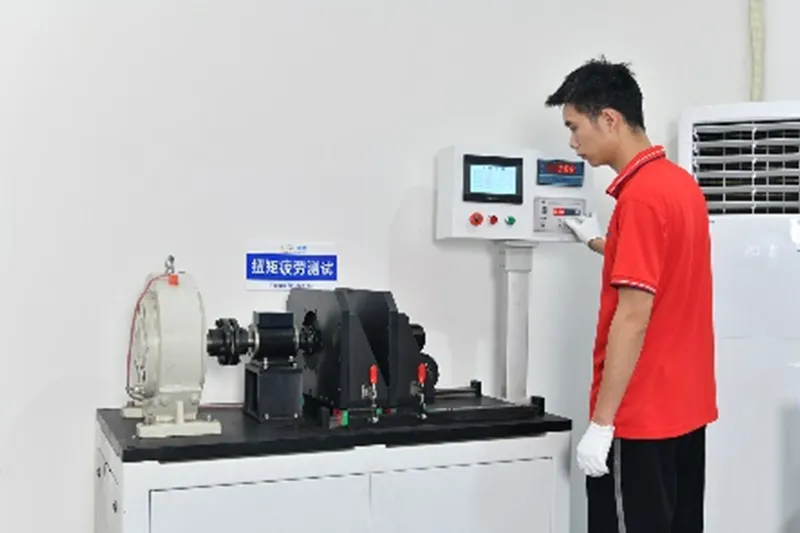Noise Test
Noise Testing: Guaranteeing Smooth and Silent Reducer Performance
What Is Noise Testing?
Noise testing measures the sound levels produced by a fully assembled planetary reducer during operation. Using specialized microphones and vibration sensors, the test identifies sources of mechanical noise caused by gear meshing, bearing movement, or unbalanced rotation. It helps confirm that the reducer operates within defined acoustic thresholds suitable for automation environments.


What Defines a High-Quality Noise Test?
A reliable noise test process includes:
- Controlled test environments with calibrated equipment
- Measurement of noise in decibels across frequency ranges
- Real-time data capture and waveform analysis
- Identification of tonal noise from gears or bearings
Tests must simulate real operating speeds and loads to evaluate how the reducer will sound in actual use cases.
Why Noise Testing Matters in Planetary Reducers
Noise levels reflect internal accuracy and balance. Noise testing ensures:
- Smooth gear meshing and alignment
- Low operational vibration, improving system stability
- Customer comfort, especially in collaborative robots or lab equipment
- Early detection of assembly or part defects
A quiet reducer is typically a precise and well-assembled one.


How VIGE Performs Noise Testing
At VIGE, all reducers undergo end-of-line acoustic testing using:
- Soundproof test cells with real-time dB monitoring
- Simulated load and speed profiles
- Digital data logging for traceability
- Threshold alarms for quality contro
Units that exceed acceptable noise limits are flagged for further inspection before shipment.
Additional Benefits of Noise Testing
Accurate noise testing ensures long-term customer satisfaction and supports high-quality branding. Benefits include:
- Fewer field complaints and returns
- Safer and quieter work environments
- Easier integration into sound-sensitive systems


